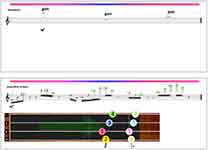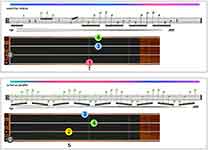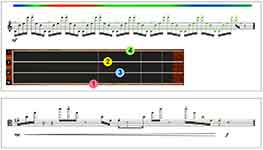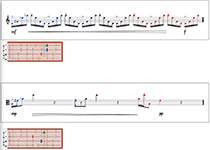
Concert Installation Film
Terraformation
INSTRUMENTATION
viola (or violin)
computer
DURATION
15:00 (variable)
PROGRAM NOTES
Terraformation concerns a fusion of several disparate themes. The first, and perhaps central, theme is that of terraforming. This is the hypothesized large-scale transformation of an inhospitable planetary body into one fit for Earth- like organic life. Popularized in science fiction, serious studies on the procedures for terraforming come from the gradually maturing scientific exploration programs on Earth’s moon, Mars, and Venus. These issues prompt reflection on humanity’s history of colonialism, abuse of resources, lack of environmental concern, and how these might manifest beyond our home planet.
At the same time, Terraformation is inspired by Philip Johnson’s sculptures and architecture at the Fort Worth Water Gardens in Fort Worth, Texas. This urban park contains several named “micro-environments”: Active Water Pool, Aerated Water Pool, Quiet Water Pool, Mountain, Central Square, Stage, and Events Plaza. The style of the Gardens is minimal and angular. They give an abstracted impression of a natural landmark such as a mountain or a river canyon, ignoring many realistic details in favor of sensory appeal.
The connection between terraforming and the Fort Worth Water Gardens is humanity’s attempt to fashion a world after its own design. This world has rough edges and missing details, no oceans and preciously little oxygen. Everything is synthetically derived. We bring our plants and animals, our histories and cultures. We also bring our diseases, our selfishness, and our unchecked ambitions. Terraformation is a creation story.
This piece uses a computer screen to display music notation that changes during the performance based on decisions made by both the musician and the computer. In this way, every performance is unique and unrepeatable.
PERFORMANCE DIRECTIONS
Terraformation uses real-time notation and requires the performer to sight-read music as it is algorithmically generated during the performance. The goal of a performance of the piece, therefore, is not perfect adherence to the demands of the score, but a productive interaction between human and artificial intelligence. The performer should attempt to both read the music as accurately as possible and respond to it intuitively, which will in turn influence the computer’s musical decisions. The piece is "cartographically" composed meaning that the large-scale structure is mapped by the composer but the surface details are left to the computer and performer to determine. The violist drives the notation forward by briefly depressing a MIDI foot switch. Pressing and holding the foot switch down will cycle through alternate paths through the piece. The pacing and direction of the piece are thus determined by the performer.
NOTATION DISPLAY
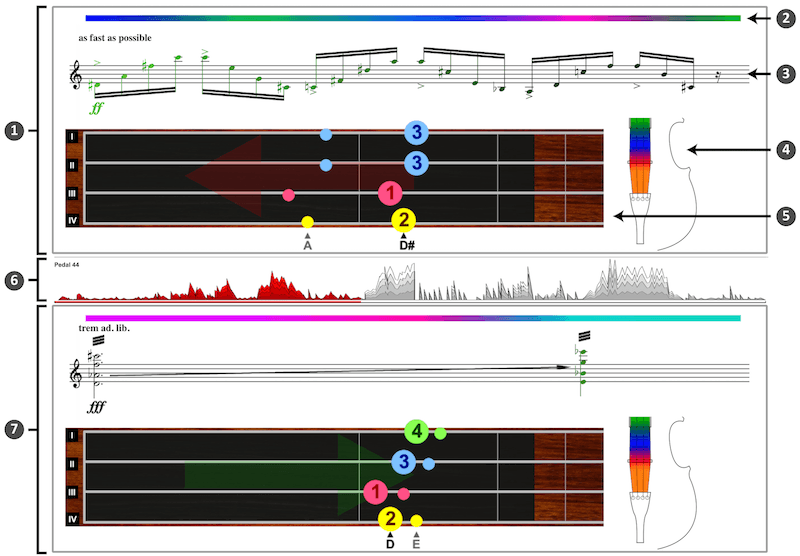
1. Current Staff System: The current location in the piece is displayed in the upper section of the GUI.
2. Bow Contact Position Gradient: This color graphic informs the player where to place the bow on the instrument. The color matches a location shown on the viola graphic (4) and should be read left-to-right in vertical alignment with the common practice notation (3).
3. Common Practice Notation (CPN): The traditional symbols for pitches, rhythms, articulations, dynamics, and other playing techniques are displayed here. Text indications for tempo and character are notated in the top left corner.
4. Viola Graphic: This graphic serves as a reference for the bow contact position gradient (2) showing the physical locations of the different colors.
5. Fingerboard Notation: This is a pictorial representation of the viola’s fingerboard. Each finger is notated with a corresponding number and color on each of the instrument’s strings. The pitch of the lowest string is displayed in black below. Further, the player may be asked to slide the hand position along the fingerboard to an ending location indicated by small, colored circles. The pitch of the lowest string at the terminus of a glissando is displayed in grey below.
6. Formal Map: This graphic informs the player of their current location in the overall form. The red bar progresses from left-to-right at each press of the foot switch. The vertical axis of the graphic indicates expected areas of intense rhythms, dynamics, or range. The current system number is displayed in the upper left hand corner.
7. Read-Ahead Staff System: The lower section of the GUI allows the player to read ahead and anticipate upcoming material.
WORK IN PROGRESS


